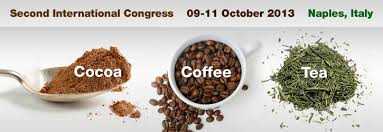Akillioglu H.G., Gokmen V. Department of Food Engineering, Hacettepe University, Ankara, Turkey. E-mail: gulakillioglu@hacettepe.edu.tr
Today’s instant coffee production method involves roasting of coffee beans, grinding, flavour and aroma separation, extraction, concentration, and drying steps.
During roasting, some processing toxicants, such as acrylamide and hydroxymethyl furfural (HMF) are formed in varying amounts depending on the degree of heat treatment as a result of the Maillard reaction (MR) and sugar decomposition.
Acrylamide and HMF concentrations in roasted coffee, instant coffee, and coffee substitutes are in the range of 50-3000 ng/g and 100-4000 mg/kg, respectively. According to European Food Safety Authority report, the contribution of coffee to acrylamide exposure is up to 40% in some countries [1]. Also coffee is known to be the most important source of HMF in daily diet [2].
Mitigation strategies generally focus on the restriction of MR that is responsible for the development of aroma and flavour in the product. Roasted coffee is one of the most difficult product in which known mitigation strategies are practically not viable.
This study aimed to investigate the mitigation of acrylamide and HMF in instant coffee by means of yeast fermentation, without limiting MR. Instant coffee (20%, w/v) was mixed with sucrose (0-10, w/v) and baker’s yeast (Saccharomyces cerevisiae, 1-2%, w/v) in a tightly closed glass vessel.
The mixture was fermented at 30°C for 48 h. The kinetics of acrylamide and HMF degradation was investigated. It was found that HMF and acrylamide concentrations decreased exponentially during fermentation. The kinetic data were fitted to the following equation; C = C0 × [exp(−k×t)] where C: concentration at any time, C0 (M): initial concentration (M), t: time (h), and k: rate constant (h−1).
After 24 h, HMF concentration was decreased by 61.2%, 75.7%, 93.6% and 99.2% in the fermentation media containing none, 1%, 5%, and 10% of sucrose, respectively.
After 48 h, acrylamide concentration was decreased by about 70%. These results revealed that yeast fermentation is promising for the mitigation of HMF and acrylamide in instant coffee.
The method developed by the integration of fermentation step into regular production of instant coffee can be easily adapted by the industry.
References [1] Arribas-Lorenzo, G., & Morales, F. J. Analysis, Distribution, and Dietary Exposure of Glyoxal and Methylglyoxal in Cookies and Their Relationship with Other Heat-Induced Contaminants. J Agric Food Chem. 2010, 58 (5), 2966-2972
[2] EFSA, European Food Safety Authority. Results on acrylamide levels in food from monitoring years 2007- 2009. EFSA Journal. 2011, 9(4), 2133.










